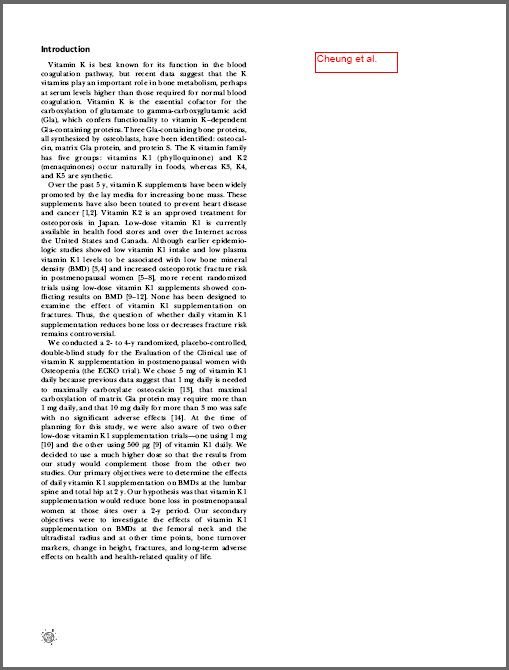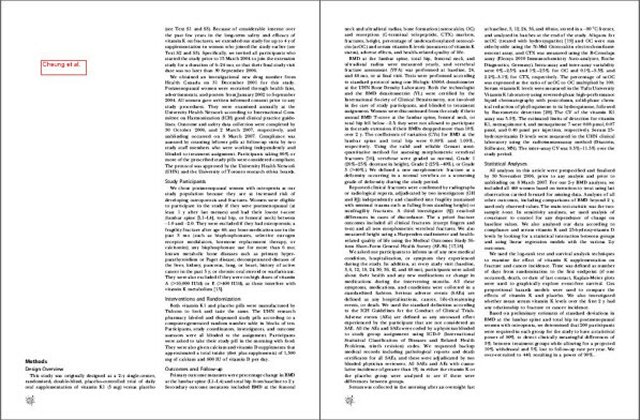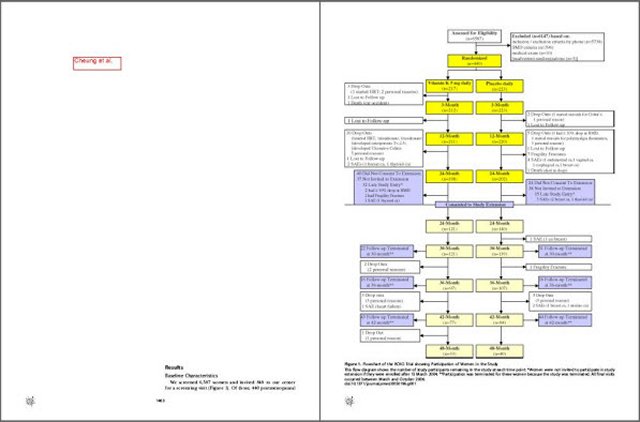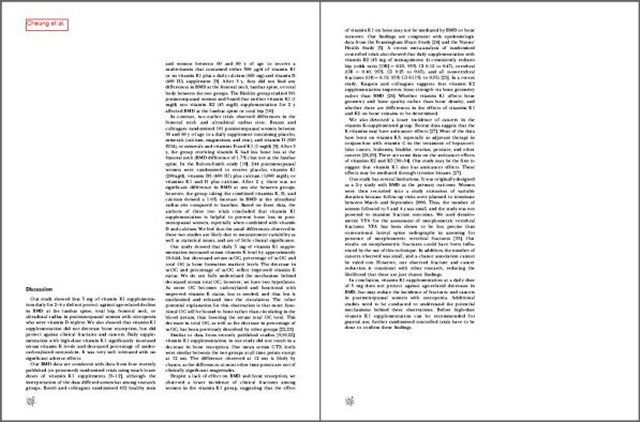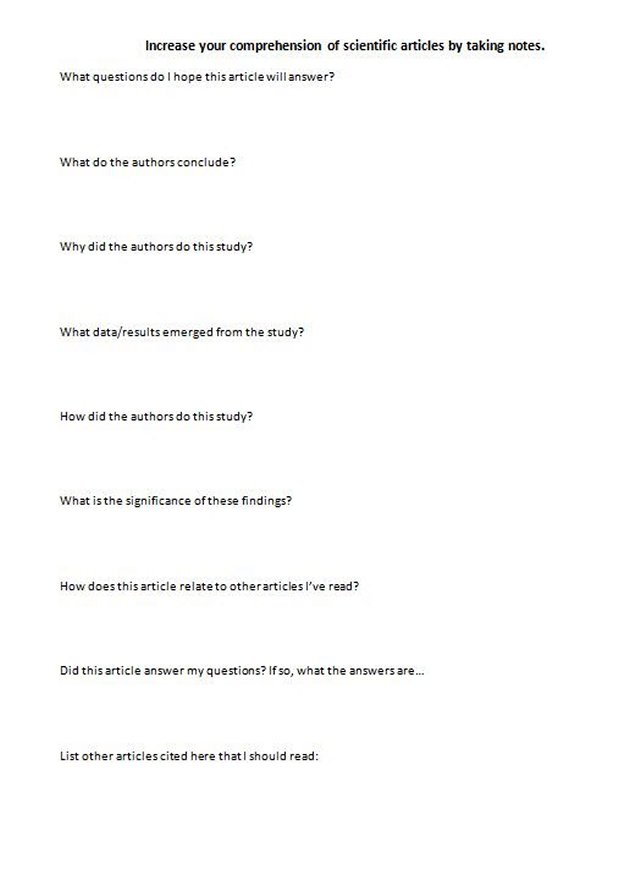Electronic Journal of Academic and Special Librarianshipv.9 no.1 (Spring 2008) |
 |
Increasing Impact of Scholarly Journal Articles: Practical Strategies Librarians Can Share
Laura Bowering Mullen, Behavioral Sciences Librarian
Library of Science and Medicine, Rutgers University, Piscataway, New Jersey, USA
lbmullen@rci.rutgers.edu
Library of Science and Medicine, Rutgers University, Piscataway, New Jersey, USA
lbmullen@rci.rutgers.edu
Abstract
Researchers are extremely interested in increasing the impact oftheir individual scholarly work, and may turn to academic librarians
for advice and assistance. Academic librarians may find new roles as
consultants to authors in methods of self-archiving and citation
analysis. Librarians can be proactive in this new role by
disseminating current information on all citation analysis tools and
metrics, as well as by offering strategies to increase Web visibility
of scholarship to interested faculty. Potential authors of journal
articles, especially those faculty seeking greater research impact,
such as those seeking promotion and tenure, will find practical
suggestions from librarians invaluable. Citation analysis tools
continue to improve in their coverage of social and behavioral science
fields, and emerging metrics allow more flexibility in demonstrating
impact of published journal articles.
Increasing Impact of Scholarly Journal Articles: Practical Strategies Librarians Can Share
Academic librarians are always seeking new ways to use theirexpertise to assist faculty and students. Faculty and other researchers
are interested in learning practical tips to increase Web visibility
of their publications, thereby hoping to increase the impact of their
own scholarship by reaching more readers on the internet. The
traditional paradigms are changing, and librarians may be well
positioned for new roles in consulting with clients about methods of
increasing research impact of published articles. This type of reference
service may be especially valuable to faculty seeking promotion and
tenure, or to others wishing to take advantage of developments in open
access for personal gain. By keeping certain strategies in mind when
writing for publication, authors can realize greater impact of their
articles. Academic librarians can disseminate information about
strategies that authors can be use when choosing publications, and
provide information on new methods of proving impact in different ways.
There have been many new developments with citation analysis of
late, and librarians need to be able to educate clientele about
emerging tools and metrics. Impressive new citation analysis tools
allow a researcher to package and demonstrate impact textually and
graphically. New metrics such as the “h-index,” and “eigenfactor” are
providing alternate ways of looking at the impact of citations,
authors, and individual journals.1
Librarians will need to be conversant in these and other emerging
metrics in order to remain relevant to discussions about citation
analysis, especially in STM areas. New research guides and finding aids
should be made available from the library Website to assist faculty
and others in keeping up with the most current strategies about open
access, and then assisting them in quantitatively demonstrating the
increased impact that may result. There are some concerns about the
costs of providing all of the necessary citation analysis tools within
stretched library budgets. However, some tools are Web-based and free.
Some question whether it should be the province of the library to teach
classes in citation searching and analysis for purposes of promotion
and tenure, or whether it is appropriate for librarians to assist
faculty and other researchers in maximizing their impact through
self-archiving and other means.
By now, it has become fairly well accepted that open access
associated with greater Web visibility increases research impact. A
plethora of quantitative studies are available as part of a helpful
Webliography that librarians may share with researchers. This
Webliography, published by the “Open Citation Project” is updated
regularly, and is a one-stop shop for anyone looking to bolster the
argument that “open access increases research impact.”2
Librarians can offer advice to constituents on strategies to increase
visibility of their peer-reviewed journal articles. Subject specialist
librarians can prepare discipline-specific information on
self-archiving and matters of impact. This information can be
disseminated from the library via the Website, or through personal
consultation between librarian and researcher. Faculty and other
researchers may now be seeking this type of information, and the time
may now be opportune for reference and faculty liaison librarians to
get involved in proactively disseminating practical information. Much
information discussed previously on these topics has largely been
theoretical, or scattered in a variety of library publications and
Websites.
For more than a decade, many librarians and scientists have
persistently made the case that self-archiving is the open access
strategy that would prove most effective for the rapid and widespread
dissemination of peer-reviewed scholarly journal articles. Stevan
Harnad, first in his “subversive proposal” and still today, continues
to advocate for self-archiving of preprints and postprints in
repositories as a mechanism to increase Web visibility. This has often
been called the “green” road to open access.3
This mechanism of increasing visibility is outside of the traditional
publishing system, and only requires authors to retain rights, and to
deposit their own work in a digital repository of their choice.
Librarians must understand the potential of self-archiving to transform
the scholarly communication system for many disciplines.
Peter Suber has also published many Weblists and articles for
librarians who would like to remain current with open access
initiatives and trends.4
Depending on the university, librarians might not only be expected to
lead the discussion on self-archiving, but also to assist researchers
with the actual process of depositing scholarly work in appropriate
digital repositories. Those working at libraries developing
institutional repositories will also take on the task of encouraging
faculty to participate in the population of the institutional
repository.
There are many other types of open access models. Open access
journals, “born digital” on the Web, also offer promise for authors
seeking impact. Open access journals are included in traditional
indexing and abstracting sources, and many have gained prestige in
their respective fields. As with any journal, authors should make sure
the open access journal is one of quality in the traditional sense.
Peer review status, stature of editors and reviewers, and other measures
of quality have transitioned well to this new publishing model.
Librarians may also be asked to help in choosing an open access
publication outlet for a researcher looking to submit peer-reviewed
scholarship to a journal that would be free to all on the Web. Also,
many traditional journals have liberalized policies and changed
business models to accommodate some aspects of open access. Some of the
largest commercial publishers may have liberal policies when it comes
to self-archiving of postprints.
However it is shared and promulgated, information on open access
journals, self-archiving, choosing between different models offered by
traditional journals, and the most current citation analysis methods
must be discussed and offered to library clientele. Who will be
responsible for continuous education of librarians in these areas, and
for making decisions about what services will be offered to various
groups? Librarians may have broken ranks on some of these issues, not
wanting to be responsible for any negative outcome to researchers, or
not agreeing with some of the open access strategies currently being
trumpeted by library advocacy organizations.
Many have heard of open access, but do not know how to apply the
principles and reap the benefits in a strictly practical sense. Open
access is a ubiquitous topic in the library world at the moment, and is
well-established in some STM disciplines. Those in humanities and some
social sciences areas, which have been slower to adopt changes in
scholarly communications, may be more apt to need background
information on the movement. Many are not sure how open access will
affect them. However, information on any strategy for increasing impact
through greater Web visibility will be welcomed by researchers. This
is information that faculty members and other research clientele of
academic libraries will undoubtedly find compelling and useful.
Librarians may want to share the following strategies with all library
users in person, from the desk, or through the library Website. The
following is an example of a list that academic librarians may want to
disseminate widely. This type of list is targeted not to librarians, but
to faculty and researchers they work with.
What practical steps can authors take to increase impact of scholarly journal articles:
- Self-archive/deposit publications (preprints and/or postprints)
in disciplinary archives. These subject- based repositories allow
researchers to archive electronic documents through a simple deposition
process. Examples of disciplinary repositories are:
CogPrints(cognitive science and psychology), arXiv(physics), and E-LIS
and dLIST(librarianship). These subject repositories are crawled by
search engines, and many readers using services such as Google, Google
Scholar, or OAIster readily find and cite these full-text open access
materials. Many more readers will see articles than if they are only
available in traditional journals. Articles may appear in traditional
journals as publisher PDFs while also appearing in other versions
(postprints such as final Word document copies) in subject-based
disciplinary repositories. Subject archives do not guarantee
sustainability or preservation of publications. Self-archiving is
effective for current Web dissemination of work to all potential
readers. It is up to authors to make sure that signed copyright
transfer agreements (CTAs) allow self-archiving of scholarly
peer-reviewed work. Self-archiving in repositories crawled by search
engines really gets an article out on the Web for all to find and read.
- To see what publisher allows in terms of self-archiving, check the publisher or journal name in the SHERPA/RoMEO Website.
http://www.sherpa.ac.uk/romeo.php
This Website describes the kind of archiving the publisher allows; for
anything beyond what's presented, researcher may need to email the
publisher or editor. Many journals do not make their copyright transfer
agreements publicly available. Many only mention permission to
self-archive on personal Web pages, or in institutional repositories,
not mentioning subject archives. Researchers may have to seek
permission to self-archive in disciplinary/subject repositories.
- If signing a restrictive copyright, authors may need to get a
copy of SPARC's “Author's Addendum” to retain more personal rights to
self-archive. There are other examples of added language from many
universities that can be found on the Web. These statements may serve
to extend author rights. Authors must be aware of the importance of
retaining rights to use of their own work, rather than just signing
their copyright away to publishers. - Deposit all work in an institutional repository. A repository
will preserve scholarly output, and pulls together all of an author's
interdisciplinary work in one location. Permanent digital
preservation/archiving of an author's work, especially if it has not
been published in print is very important. The institution's repository
offers this security, as well as a convenient place to direct others
to find the entire corpus of an author's work. Personal Web pages may
be subject to a lack of quality control. Some repositories are crawled
by Google, aiding discovery by many Web searchers outside the
institution. Institutional repositories have many other benefits to all
researchers in the academy. The visibility of interdisciplinary
research initiatives in progress or completed, the discovery of
potential collaborators across the institution, the ability to archive
datasets, the total research production of an institution displayed in
one place, and the possibility of integration with courseware are just a
few of the many benefits. A few libraries mandate deposition of
faculty work in the institutional repository, but for most,
participation is voluntary. - Make sure when submitting work to traditional commercial or
society journal publishers that they are participating with Google
Scholar so Google can crawl the content. Most publishers are now
“partners” with Google Scholar but some are still only participating in
a limited way, or not at all. If an author's work cannot be found in a
search of Google Scholar, it is best to contact any publishers that
are non-partners and ask them to participate with Google Scholar. You
will want your publications to appear in Google Scholar with all of
their versions, both free and subscription. Many libraries link their
subscribed collections with Google Scholar for enhanced access, drawing
more readership to an author's work. Those articles appearing in
Google Scholar will then benefit from the citation analysis that
results. - Seek to publish work in peer-reviewed open access journals.
Articles published in these scholarly online journals will go quickly
to the Web to be found by searchers. Open access journals are free to
readers, and most are free to authors, so there are no subscription
barriers. Don't dismiss “author pays” models if research funding is
available. Make sure open access journals, those “born digital,” have
high level editorial boards, and prestige in the field. Authors
should make sure that the open access journal, as well as any other
journal of interest is included in as many subject and citation indexes
as possible to ensure discovery by more searchers of library
subscription databases. Open access journals are subject to the same
coverage criteria as any other print or electronic journal when
applying for coverage by the subject and aggregator indexes. If
publishing in any journal, make sure that journal is indexed in all
appropriate subject indexes and databases. Searchers of subject indexes
will discover these articles, and consider them vetted for scholarly
value. - If an author plans to publish work in a traditional, high impact
journal, it helps to know that some make their older issues open access
free on the Web after a short “embargo” period. In this case, the
journal is not open access per se, but all older issues get wide
circulation on the Web. An example is “College & Research
Libraries,” which is free on the Web after a six month embargo period.
Many of the publishers of these journals allow self-archiving of
postprints during the embargo period. Even those that do not convert
their journals to open access still may allow self-archiving of
postprints. Elsevier is an example of a commercial publisher that allows
self-archiving of postprints. Authors should ensure that the business
models of the publications they submit to will eventually allow some
version of the article(s) to be discoverable via the open Web. - Make sure any journal that you publish in has an electronic
version. If you find one that doesn't, ask if they are considering
adding this format, and let them know that it matters to you. Journals
available only in paper format that don't allow self-archiving are seen
by limited readers in the age of the internet. Articles in some books
may suffer from this same lack of Web visibility. - Authors should send out information about their articles on
listservs, personal Websites, blogs, and other online communication
channels, to increase downloads. In the future, number of downloads may
also have some significance as far as impact. Some publishers
advertise their “most downloaded articles.” These articles are featured
on publishers' Websites, and then downloaded more. - As far as increasing impact, it is advantageous if journals,
open access or not, are indexed by Web of Science and Scopus. If the
journal isn't part of Web of Science, it is less likely to be
considered “prestigious” by some faculty bodies. If it is not included
in Web of Science, it will not have a published “impact factor.”
Journals with high impact factors are cited more often, and considered
more prestigious. This is especially true for STM areas, less likely
for some other disciplines, especially in the humanities. For authors
trying to demonstrate impact, journals covered by these indexes would
be important. - Follow citation impact in Google Scholar, Web of Science, and
Scopus to get a more comprehensive picture. Web of Science, although
the traditional “gold standard” of citation analysis, is especially
lacking in humanities areas. Scopus has much greater coverage of titles
in both sciences and social sciences, and some additional features for
citation analysis. Google Scholar uses an automatic algorithm, and
therefore returns some interesting results. Still, Google Scholar will
uncover citations from a different set of materials, and will provide
some indication of impact for authors. When using Google Scholar, and
the new metrics based on it, such as Harzing’s “Publish or Perish,”5
researchers need to be reminded that librarians are not sure what
publications are being covered, and the algorithm used to do the
analysis still remains somewhat unknown. The other citation indexes
publish coverage lists, and are clear about their algorithms. Still,
Google Scholar should not be discounted for citation analysis due to
its heavy use in academia. - Consider putting non-refereed materials in repositories also. To
deposit, material doesn't have to be peer-reviewed. Preprints are
allowed in many repositories because the material hasn't been
“published previously.” Preprints can give scholarly articles Web
visibility prior to certification in a peer-reviewed journal. This
practice can vary by discipline, and some publishers may not accept
articles that have been made available on the Web before submission.
Some fields such as high energy physics have been using a preprint
model for quite some time. Other fields do not have such a preprint
culture. - Sharing research data has been shown to increase citation impact.
Depositing supplementary data in a repository, or publishing it
alongside an article in an open access journal has been shown to gather
more citations to the accompanying article. One recent study of cancer
clinical trials shows that sharing data may increase impact in some
fields by as much as 70%.6 - Authors may use a combination of many of the above; there is no
limit as to where a particular work may be self-archived. Rather than
the traditional practice of simply signing away copyright to a
scholarly publisher, a copy can also be deposited in the institutional
repository, archived in subject/disciplinary archives, and on personal
Webpages if the publisher allows. This deposited article is usually the
postprint (often in the form of a final Word document), or a preprint
(often already accepted by a publisher). Branded publisher PDFs, in the
case of commercial or society journals, usually face restrictions as
far as archiving.
and other researchers some proven strategies to get their peer-reviewed
articles seen by more people on the Web. This will potentially raise
the profile and impact of published work. This impact can then be
quantitatively demonstrated with both traditional and new citation
analysis tools. Librarians can compile lists of tips and strategies to
assist authors and researchers in these areas. These lists can be
published as Web guides, or shared with faculty and researchers in
other ubiquitous ways. Appropriate places for this information would be
the “faculty services” area of the library Website, the scholarly
communications committee Website, in brochures distributed at desks,
and as part of research consultations and fora with faculty and other
researchers. Librarian expertise in these areas will have great value
to researchers in the academy, and enhance the suite of services that
the library can provide in a new and changing research environment.
Librarians must prepare for, and welcome the conversation.
Notes
1. Hirsch, J.E. "An Index to Quantify an Individual's Scientific Research Output." Proceedings of the National Academy of Sciences, USA
102, no. 46 (2005a): 16569-72.; West, Jevin, Ben Althouse, Carl
Bergstrom, and Ted Bergstrom. "Eigenfactor.Org: Ranking and Mapping
Scientific Knowledge." http://www.eigenfactor.org/.
2. The Open Citation Project - Reference Linking and Citation Analysis for Open Archives." http://opcit.eprints.org/oacitation-biblio.html.
3. Okerson, Ann Shumelda, O'Donnell, James J., ed. Scholarly Journals at the Crossroads: A Subversive Proposal for Electronic Publishing.
Washington, D.C.: Association of Research Libraries, Office of
Scientific and Academic Publishing, 1995; Harnad, Stevan. "Fast-Forward
on the Green Road to Open Access: The Case against Mixing up Green and
Gold." Ariadne 42 (2005).
4. Suber, Peter. "Lists Related to the Open Access Movement." http://www.earlham.edu/~peters/fos/lists.htm#incomplete; Suber, Peter. "Open Access Overview: Focusing on Open Access to Peer-Reviewed Research Articles and Their Preprints." http://www.earlham.edu/~peters/fos/overview.htm.
5. Harzing.com: Research in International and Cross-cultural Management. “Publish or Perish.” http://www.harzing.com/index.htm.
6.
Piwowar, Heather A., Roger S. Day, and Douglas B. Fridsma. "Sharing
Detailed Research Data is Associated with Increased Citation Rate." PLoS ONE 2, no. 3 (2007): e308.
- If signing a restrictive copyright, authors may need to get a
Increasing Impact of Scholarly Journal Articles










